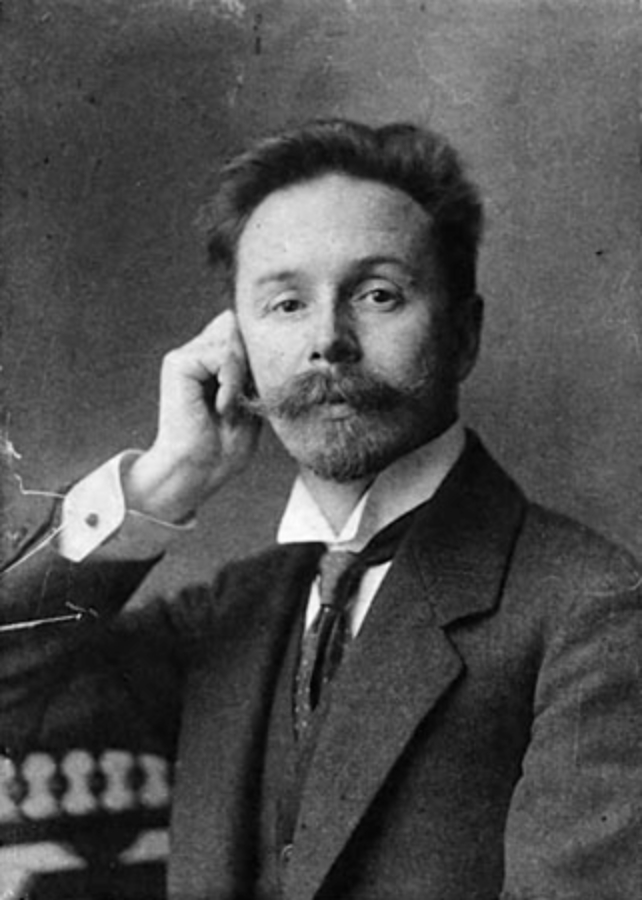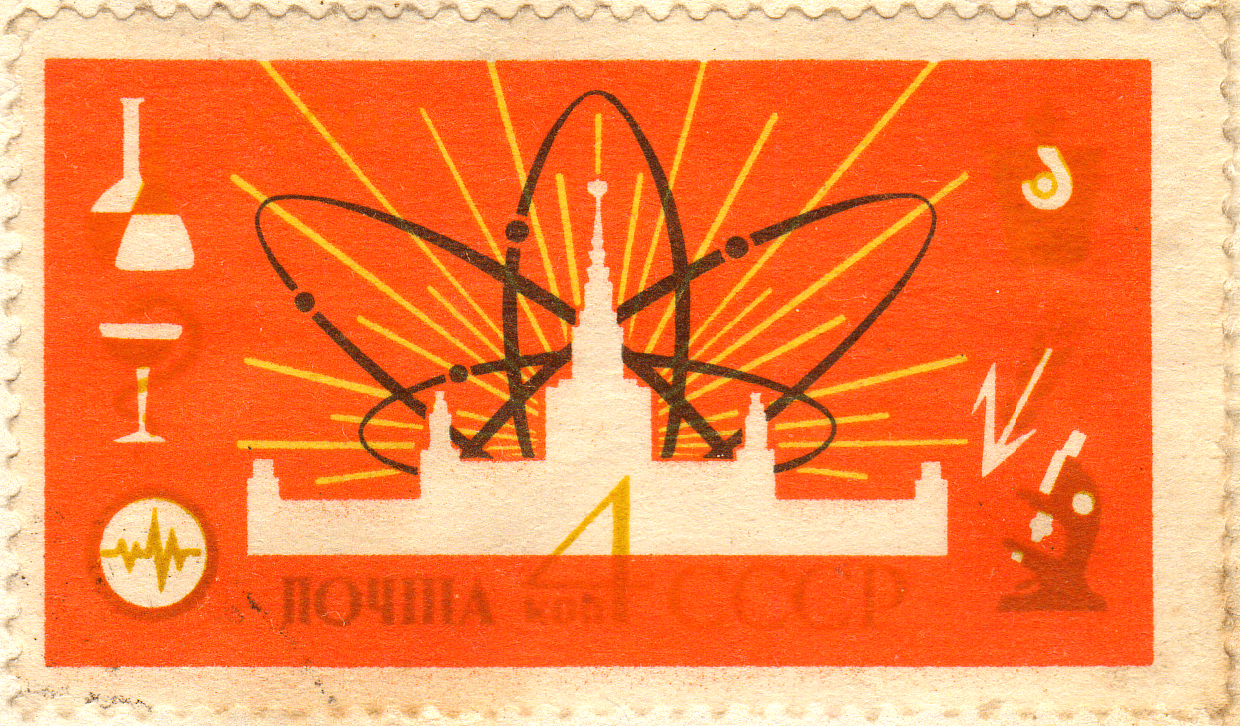|
Alexander Scriabin
Alexander Nikolayevich Scriabin, scientific transliteration: ''Aleksandr Nikolaevič Skrjabin''; also transliterated variously as Skriabin, Skryabin, and (in French) Scriabine. The composer himselused the French spelling "Scriabine" which was also the most popular spelling used in English-language publications during his lifetime. First editions of his works used the RomanizationsScriabine,Scriàbine, andSkrjábin"., group=n () was a Russian composer and pianist. Before 1903, Scriabin was greatly influenced by the music of Frédéric Chopin and composed in a relatively tonal, late- Romantic idiom. Later, and independently of his influential contemporary Arnold Schoenberg, Scriabin developed a much more dissonant musical language that had transcended usual tonality but was not atonal, which accorded with his personal brand of metaphysics. Scriabin found significant appeal in the concept of Gesamtkunstwerk as well as synesthesia, and associated colours with the various harmonic t ... [...More Info...] [...Related Items...] OR: [Wikipedia] [Google] [Baidu] |
List Of Compositions By Alexander Scriabin
This is a list of compositions by Alexander Scriabin. The list is categorized by Genre, with Piano works organized by style of piece. The list can be sorted by Opus number and WoO number (mostly early works published posthumously) and Anh number (mostly fragmentary works), by clicking on the "Opus" header of the table. Sorted in this Opus/WoO/Anh order, duplicate entries (those listed initially under more than one genre) are moved to the bottom of the list with the unused genre headers. The majority of Scriabin's works have opus numbers. His work can be divided into three (somewhat arbitrary) periods, based on increasing atonality: early, 1883–1902 (Opp. 1–29); middle, 1903–1909 (Opp. 30–58); and late, 1910–1915 (Opp. 59–74). The development of Scriabin's style can be traced in his ten published sonatas for piano. The first four are in the Romantic style. Initially the music is reminiscent of Chopin, but Scriabin's unique voice, present from the beginning, becomes ful ... [...More Info...] [...Related Items...] OR: [Wikipedia] [Google] [Baidu] |
Tula, Russia
Tula (, ) is the largest city and the administrative center of Tula Oblast in Russia, located south of Moscow. Tula is located in the northern Central Russian Upland on the banks of the Upa (river), Upa River, a tributary of the Oka (river), Oka. At the Russian Census (2010), 2010 census, Tula had a population of 501,169, an increase from 481,216 in 2002, making it the List of cities and towns in Russia by population, 32nd-largest city in Russia by population.A primarily industrial types of inhabited localities in Russia, city, Tula was a fortress at the border of the Principality of Ryazan. The city was seized by Ivan Bolotnikov in 1606 during the Time of Troubles and withstood a four-month siege by the Tsar's army. Historically, Tula has been a major centre for the manufacture of Weapon, armaments. The Demidov family built the first armament factory in Russia in the city, in what would become the Tula Arms Plant, which still operates to this day. Tula is home to the Klokovo (a ... [...More Info...] [...Related Items...] OR: [Wikipedia] [Google] [Baidu] |
Moscow State University
Moscow State University (MSU), officially M. V. Lomonosov Moscow State University,. is a public university, public research university in Moscow, Russia. The university includes 15 research institutes, 43 faculties, more than 300 departments, and six branches. Alumni of the university include past leaders of the Soviet Union and other governments. As of 2019, 13 List of Nobel laureates, Nobel laureates, six Fields Medal winners, and one Turing Award winner were affiliated with the university. History Imperial Moscow University Ivan Shuvalov and Mikhail Lomonosov promoted the idea of a university in Moscow, and Elizabeth of Russia, Russian Empress Elizabeth decreed its establishment on . The first lectures were given on . Saint Petersburg State University and MSU each claim to be Russia's oldest university. Though Moscow State University was founded in 1755, St. Petersburg which has had a continuous existence as a "university" since 1819 sees itself as the successor of an a ... [...More Info...] [...Related Items...] OR: [Wikipedia] [Google] [Baidu] |
Julian Calendar
The Julian calendar is a solar calendar of 365 days in every year with an additional leap day every fourth year (without exception). The Julian calendar is still used as a religious calendar in parts of the Eastern Orthodox Church and in parts of Oriental Orthodox Churches, Oriental Orthodoxy as well as by the Amazigh, Amazigh people (also known as the Berbers). The Julian calendar was proposed in 46 BC by (and takes its name from) Julius Caesar, as a reform of the earlier Roman calendar, which was largely a lunisolar calendar, lunisolar one. It took effect on , by his edict. Caesar's calendar became the predominant calendar in the Roman Empire and subsequently most of the Western world for more than 1,600 years, until 1582 when Pope Gregory XIII promulgated a revised calendar. Ancient Romans typically designated years by the names of ruling consuls; the ''Anno Domini'' system of numbering years was not devised until 525, and became widespread in Europe in the eighth cent ... [...More Info...] [...Related Items...] OR: [Wikipedia] [Google] [Baidu] |
Russian Nobility
The Russian nobility or ''dvoryanstvo'' () arose in the Middle Ages. In 1914, it consisted of approximately 1,900,000 members, out of a total population of 138,200,000. Up until the February Revolution of 1917, the Russian noble estates staffed most of the Russian government and possessed a self-governing body, the Assembly of the Nobility. The Russian language, Russian word for nobility, ''dvoryanstvo'' derives from Slavonic ''dvor'' (двор), meaning the noble court, court of a prince or duke (''knyaz''), and later, of the tsar or emperor. Here, ''dvor'' originally referred to servants at the estate of an aristocrat. In the late 16th and early 17th centuries, the system of hierarchy was a system of seniority known as ''mestnichestvo''. The word ''dvoryane'' described the highest rank of gentry, who performed duties at the royal court, lived in it (''Moskovskie zhiltsy'', "Moscow dwellers"), or were candidates to it, as for many boyar scions (''dvorovye deti boyarskie'', ''v ... [...More Info...] [...Related Items...] OR: [Wikipedia] [Google] [Baidu] |
Moscow
Moscow is the Capital city, capital and List of cities and towns in Russia by population, largest city of Russia, standing on the Moskva (river), Moskva River in Central Russia. It has a population estimated at over 13 million residents within the city limits, over 19.1 million residents in the urban area, and over 21.5 million residents in Moscow metropolitan area, its metropolitan area. The city covers an area of , while the urban area covers , and the metropolitan area covers over . Moscow is among the world's List of largest cities, largest cities, being the List of European cities by population within city limits, most populous city entirely in Europe, the largest List of urban areas in Europe, urban and List of metropolitan areas in Europe, metropolitan area in Europe, and the largest city by land area on the European continent. First documented in 1147, Moscow became the capital of the Grand Principality of Moscow, which led the unification of the Russian lan ... [...More Info...] [...Related Items...] OR: [Wikipedia] [Google] [Baidu] |
Piano Sonata
A piano sonata is a sonata written for a solo piano. Piano sonatas are usually written in three or four movements, although some piano sonatas have been written with a single movement (Liszt, Scriabin, Medtner, Berg), others with two movements (Haydn, Beethoven), some contain five ( Brahms' Third Piano Sonata, Czerny's Piano Sonata No. 1, Godowsky's Piano Sonata) or even more movements. The first movement is generally composed in sonata form. The Baroque keyboard sonata In the Baroque era, the use of the term "sonata" generally referred to either the sonata da chiesa (church sonata) or sonata da camera (chamber sonata), both of which were sonatas for various instruments (usually one or more violins plus basso continuo). The keyboard sonata was relatively neglected by most composers. The sonatas of Domenico Scarlatti (of which there are over 500) were the hallmark of the Baroque keyboard sonata, though they were, for the most part, unpublished during Scarlatti's lifetim ... [...More Info...] [...Related Items...] OR: [Wikipedia] [Google] [Baidu] |
Faubion Bowers
Faubion Bowers (January 29, 1917 – November 17, 1999) was an American academic and writer in the area of Asian Studies, especially Japanese theatre. He also wrote the first full-length biography of Russian composer Alexander Scriabin. During the Allied Occupation of Japan, he was General Douglas MacArthur's personal Japanese language interpreter and aide-de-camp. Biography Bowers was born in Miami, Oklahoma. He graduated from Columbia University in 1935 and the Juilliard Graduate School of Music in 1939. Bowers taught at Hosei University in Tokyo from 1940 to 1941. After the surrender of Japan, he was the interpreter for the advance party of 150 US personnel which flew into the Atsugi airfield on August 28, 1945. As MacArthur's interpreter he lived at the American Embassy with the MacArthur family, and served as interpreter at the initial meeting between MacArthur and Emperor Hirohito. While an official censor for Japanese theater he became its champion. After the war he ta ... [...More Info...] [...Related Items...] OR: [Wikipedia] [Google] [Baidu] |
Karol Szymanowski
Karol Maciej Szymanowski (; 3 October 188229 March 1937) was a Polish composer and pianist. He was a member of the modernism (music), modernist Young Poland movement that flourished in the late 19th and early 20th century. Szymanowski's early works show the influence of the late Romantic music, Romantic German school as well as the early works of Alexander Scriabin, as exemplified by his Étude Op. 4 No. 3 and his first two symphonies. Later, he developed an impressionist music, impressionistic and partially atonal style, represented by such works as the Symphony No. 3 (Szymanowski), Third Symphony and his Violin Concerto No. 1 (Szymanowski), Violin Concerto No. 1. His third period was influenced by the folk music of the Polish Gorals, Górale people, including the ballet ''Harnasie'', the Fourth Symphony, and his sets of Mazurkas for piano. ''King Roger,'' composed between 1918 and 1924, remains Szymanowski's most popular opera. His other significant works include ''Hagith (oper ... [...More Info...] [...Related Items...] OR: [Wikipedia] [Google] [Baidu] |
Nikolai Roslavets
Nikolai Andreevich Roslavets (23 August 1944, also Mykola Andriiovych Roslavets) was a modernist composer active in the Russian Empire and later the Soviet Union. Roslavets was a convinced modernist and cosmopolitan thinker; his music was officially suppressed from 1930 onwards. Among his works are five symphonic poems (three of them are lost), two violin concertos, five string quartets, two viola sonatas, two cello sonatas, six violin sonatas, and five piano trios. Life Roslavets was born in Surazh, Chernigov Governorate, Russian Empire. There are three autobiographies by Roslavets that differ considerably from one another. In one of them, published 1924, the composer deliberately misrepresented his biographyLobanova 1997, 25ff. in order to prevent the attacks by the "Proletarian Musician" faction. There are differing accounts of Roslavets' birthplace, some indicating that he was born in Dushatyn to a peasant family, while he actually was born in 1881 into the family of a ... [...More Info...] [...Related Items...] OR: [Wikipedia] [Google] [Baidu] |







